It looks like I've linked you here myself. Linking people to a blogpost I wrote is often a bit akward, especially at work.
I likely shared this blog in an attempt to further a conversation. Usually the post does a better job at succinctly sharing information than I could by talking.
In any case, I hope me sharing this post doesn't come across as humblebragging, that's really the opposite of what I'm trying to achieve.
Thanks for reading!
My first steps in 3D printing10 min read
Some thoughts and pointers for beginners
, an affordable entry-level printer. [Tweet](https://twitter.com/jorisroovers/status/1271495323043745793)](3dprinter-tweet.jpg)
I got myself the AnyCubic i3 Mega S, an affordable entry-level printer. Tweet
A while ago, I got myself a 3D printer. While I’m still unmistakably a novice, I’ve already found it an incredibly useful tool in my Maker toolbox while also developing a small CAD modeling passion along the way.
If you believe - like I did - that hobby 3D printing requires a lot of technical know-how, setup, and calibration hassle to achieve at best mediocre results, I can tell you that this is no longer true. Hobby 3D printing has become affordable (< 300 EUR), requires virtually no time to get started (< 2hr) and only requires intermediate computer skills and general handiness on par with building some Ikea furniture.
If you like tinkering, building things or are just a general technology enthusiast and are in doubt about buying a 3D printer - I’d compel you to try it. It’s such a super-power and really, what do you have to lose?
Starting with 3D printing as a hobby is really easy, yet there’s virtually no limit to how far you can take it. The so-called additive manufacturing industry is not only huge in size, it’s also a hard-core engineering discipline bringing together electromechanics and materials science into a myriad of different printing techniques. All3DP.com and its sister site All3DP.pro are some of the best sources to learn and keep up, despite their somewhat over-use of advertising.
3D models
The first few days after getting the printer, I mostly printed free downloadable models (STL files) designed by others. The internet is full of them.
Some sources
- Thingiverse: probably the most well-known
- MyMiniFactory
- Thangs
- All3DP lists of stuff to print: curated lists of stuff to print. So, many, lists.
- All3DP overview of sites with 3D models
- /r/functionalprint
.](xkcd-characters.jpg)
Plenty of art and toys you can print, like these xkcd figurines.
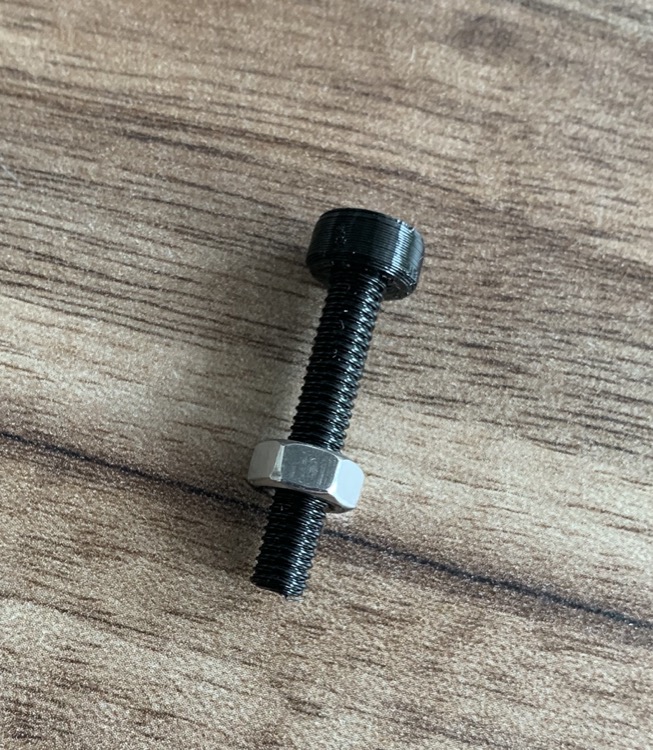
This is a plastic 3D-printed M4 bolt matching a store-bought metal M4 nut 🤯 That detail on the thread on the bolt blew me away.
You can really find almost anything: from toys to art to appliance replacement parts. What I find most interesting though, are situations where a part isn’t (readily) available to buy or where you can tailor a model to meet your specific use-case.
One way to do this is by downloading so-called parametric models, which allow you to customize a generic model by modifying pre-defined input parameters.
.](parametric-model-hinge.gif)
Customizing a parametric hinge model using OpenSCAD.
Enter CAD
. I wanted to build this myself using wood, but ended up buying the product I based the model on instead. Obviously not something you could 3D print 😎](tinkercad.jpg)
This wine-cabinet was the first serious thing I ever modelled. It took about 2 hours in TinkerCAD. I wanted to build this myself using wood, but ended up buying the product I based the model on instead. Obviously not something you could 3D print 😎
Of course, the ultimate customized part is the one you designed yourself in CAD software. 3D modelling is something I had played with a tiny bit before, but it was only after getting a 3D printer that I really started to dig in.
If you’ve never done any CAD before, I wholeheartedly recommend playing with TinkerCAD: free online CAD software that makes it super easy to get started.
Taking it a few steps up, there’s a lot of options, but Fusion360 is a very popular option which is also free for personal use (although some more restrictions have been added recently).
For me, learning Fusion360 (F360) was what made 3D printing go from being a tool to being a true super-power. I personally found F360 quite approachable and was able to teach myself the basics using trial-and-error, Youtube and Google. Since then, I’ve designed and printed two dozen or so custom widgets, enclosures, hooks and holders. Some of those I’ve uploaded to my 3d-printing repository on github (together with some downloaded models).
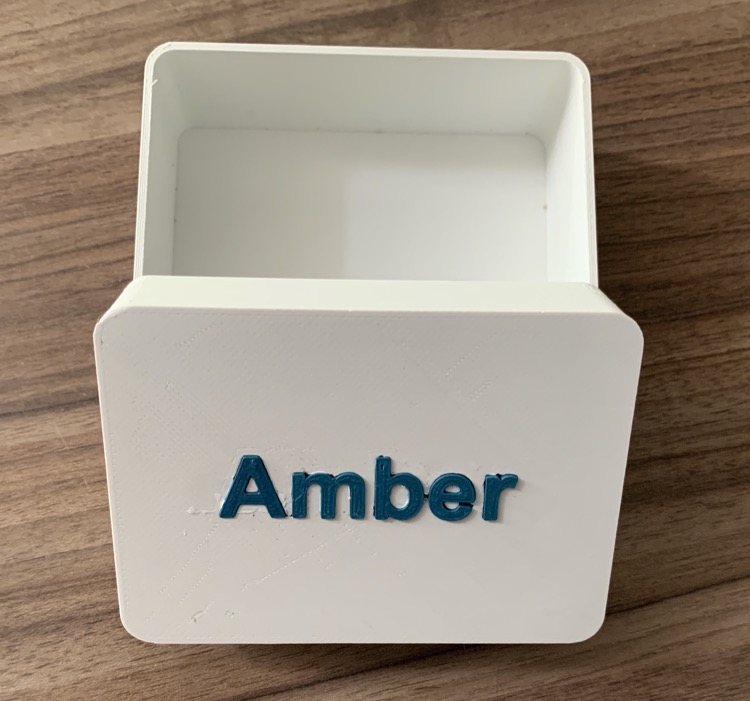
Cookiebox for a niece. Printed the box and letters separately. The lid has sunk-in placeholders for the letters.
 project.](curtain-opener-enclosure.jpg)
Custom enclosure to fit the electronics of my automatic curtain-opener project.
Cura and Octoprint
Then there’s slicer software: the program you use to convert a 3D Model (STL file) into a set of instructions (GCODE) that your 3D printer uses to actually print your model.
Long story short: slicing is a whole art on its own, but you can easily get started by using one of default slicing profiles of popular slicing software. I personally use an older version of CURA which is popular, free, easy to learn and feature-rich. For most of my use-cases, slicing comes down to loading the 3D model in CURA and re-saving it as a GCODE file - a 30 second operation.
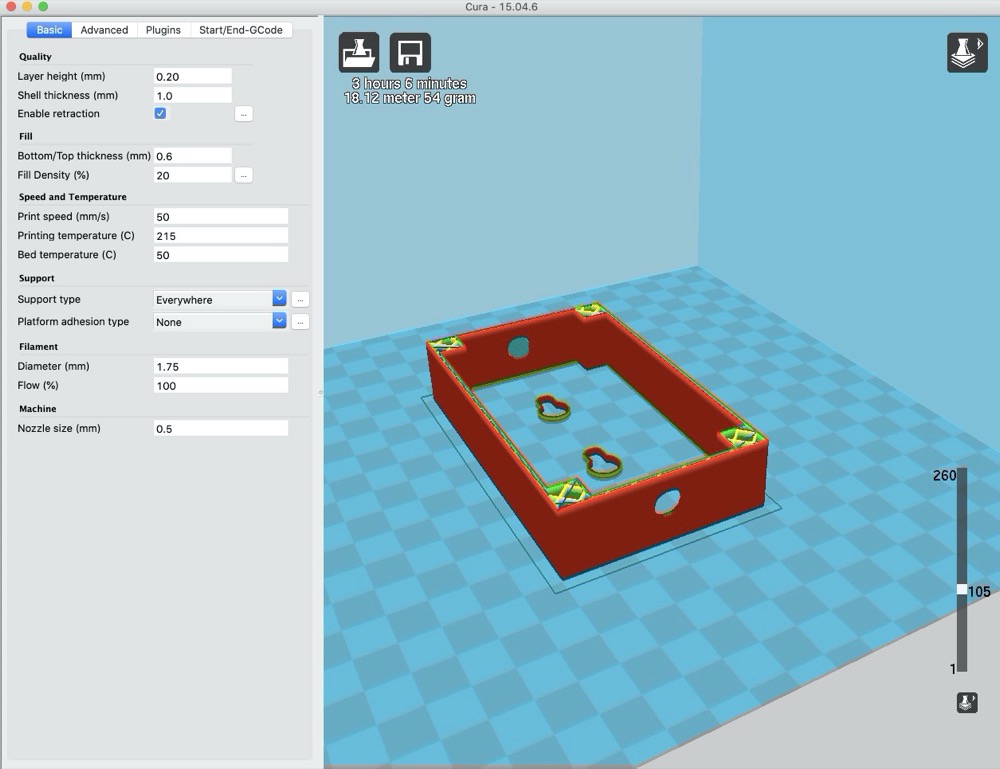
CURA allows you to slice your 3D model: telling your 3D printer how to print your model (nozzle temperature, layer height, fill density, etc). Different materials and 3D models require different settings, but you can get decent results using default settings for your printer.
Then you need to get the GCODE file to your printer. By default, most printers use an SD Card for this, although almost all of them also have a USB port that allows you to control them using a computer.
Octoprint is by far the most popular open-source software for such computer-based control. I use the excellent Octopi to host Octoprint on a Raspberry Pi I’ve got hooked up to my 3D printer. It’s hard to praise Octoprint enough (shout-out to maintainer Gina Häußge). Some of its best features:
- Printer monitoring: status, temperature, print progress
- Direct GCODE upload: no more fiddling with SD Cards
- Camera support: live >}} feed of your 3D prints
- Plugins: so many of them
- API: easily integrate with other systems such as home-assistant or your own scripts
- Mobile apps: Many options, I like OctoPod because of its notification support.
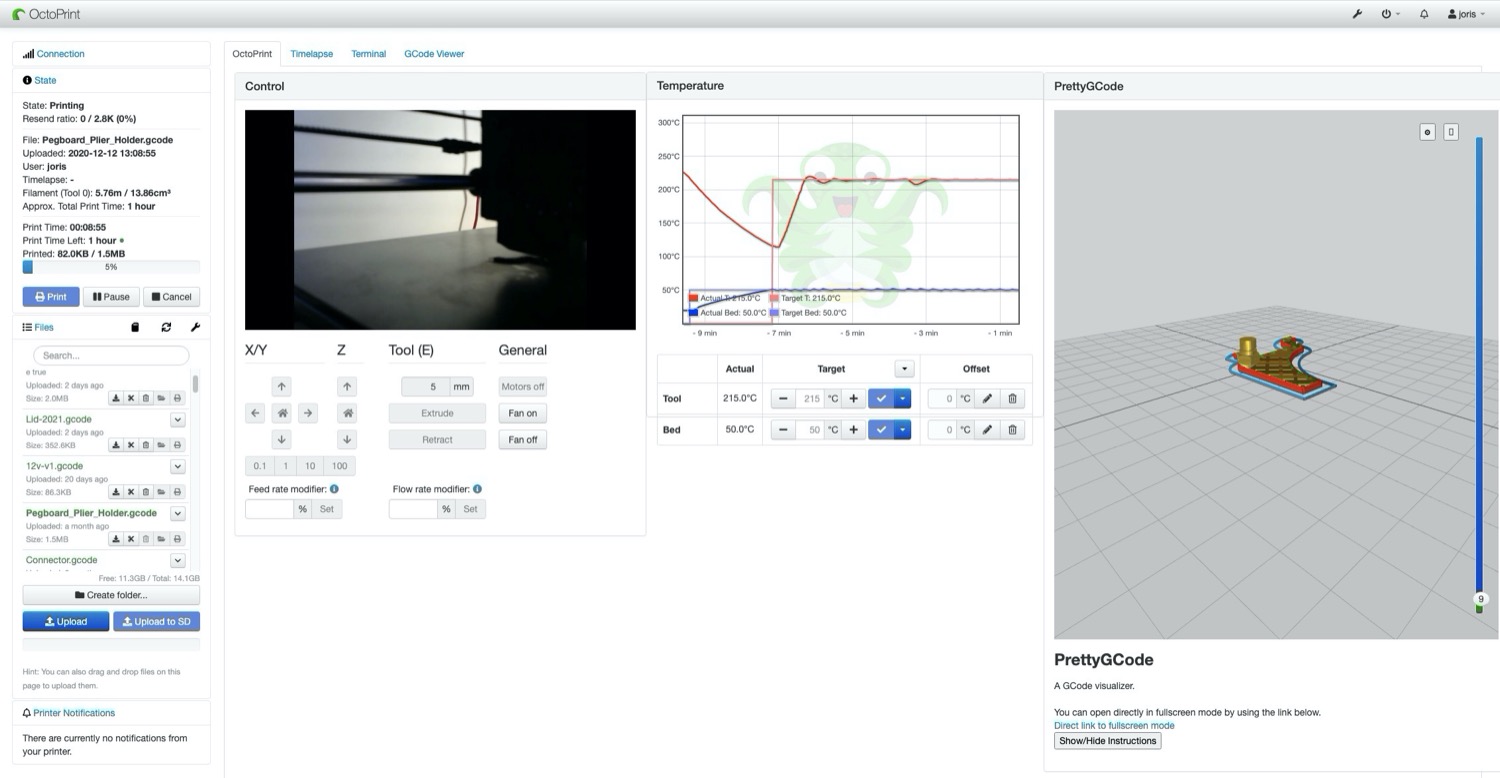
Octoprint web interface, showing file management, camera feed, printer temperature, GCODE slide visualization
Taking the plunge
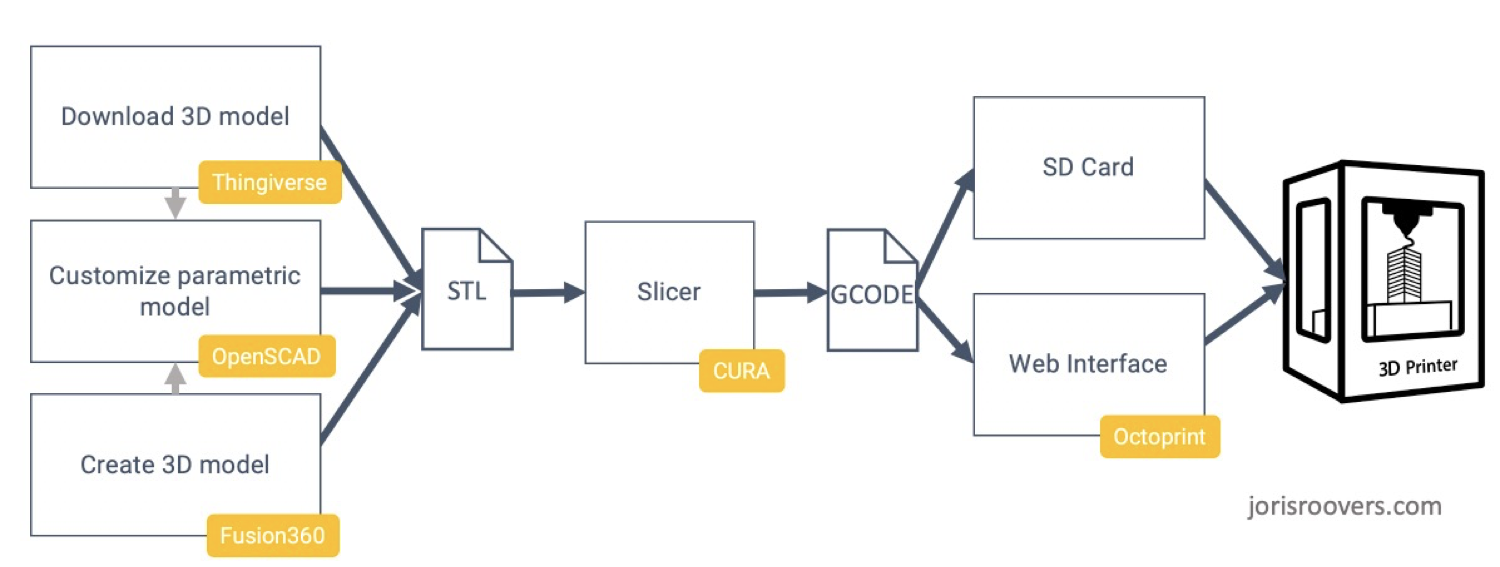
All the steps of the 3D printing process, with the yellow boxes indicating my (primary) choices of software.
As with any new hobby or interest, the endless amount of options and terminology related to 3D printing can be overwhelming. This can both be scary as well as make you spend way too much time researching everything trying to find the best fit for your use-case.
The best thing to do is to just buy an entry-level FDM 3D printer (FDM is the type of printer, like an inkjet vs. laser printer with regular printing) and jump in. You’ll be surprised what you can learn in an afternoon! Happy Printing 🤙